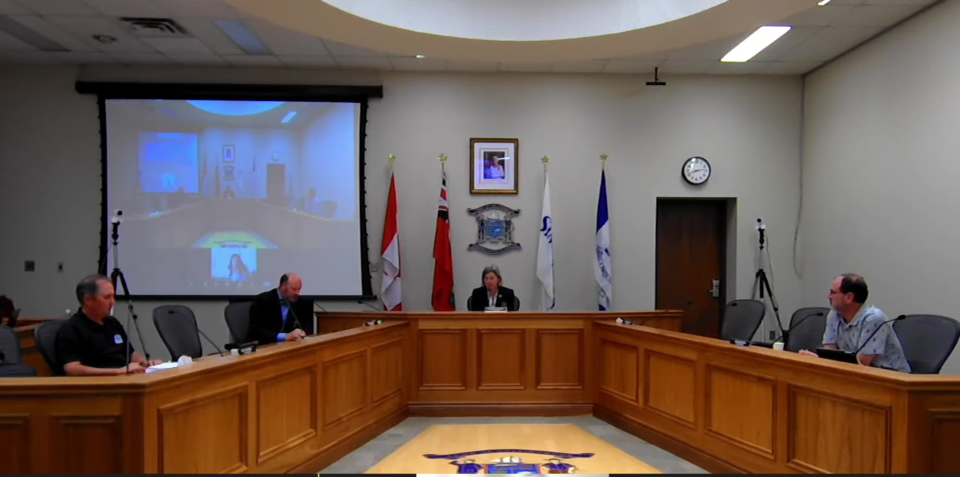Collingwood’s council is being asked to set the bar for greenhouse gas emission, by identifying a minimum reduction target staff can use as a starting point for a climate action plan.
But at least one community group hopes council and the town aim higher when it comes to lowering the town’s emissions.
Today the corporate and community services standing committee heard from the town’s climate change specialist, Nicole Yardy, who said town staff are working toward the commitments the town made in joining the Partners for Climate Protection program.
The next two milestones include setting greenhouse gas emission reduction targets for both the town’s corporate operations and the community in general, and to create a plan to reach those targets.
The standing committee was asked to approve a minimum reduction target of 20 per cent. The target was approved by committee unanimously, which includes Mayor Keith Hull, Deputy Mayor Mariane McLeod and Councillors Chris Carrier and Steve Berman.
In a written report to the committee, which will eventually be presented at a full council meeting, staff noted that a 20 per cent reduction by 2030 is less ambitious than the targets set by other municipal councils in Ontario.
A couple of factors led Yardy and town staff to suggest a lower minimum target, including the planned expansion of the town’s water treatment plant and anticipated population increase because of Collingwood’s designation as a growth area.
However, the 20 per cent target is meant to be a minimum and staff’s work on an action plan may show a higher target is possible.
David Ohrling addressed council on behalf of the Collingwood Climate Action Team, and said the group was disappointed at the low reduction target.
He cited other municipal councils in the area, including Grey County (40 per cent goal) and Orillia (50 per cent goal) and noted they have also included a goal of reaching net zero emissions (greenhouse gas emissions are offset completely by other actions to clean the air.
“We need our governments to lead by example … set ambitious targets,” said Ohrling. “Our opinion is the recommended minimum is too low and there’s no mention of aspiring to achieve net zero, which we would like to see.”
He said the group accepts the target included in the Sept. 6 report are minimums, and would hope for more ambitious targets once the action plan is set.
Yardy said she agreed the town’s targets should be ambitious and the idea of putting forward a 20 per cent target is to give an update to council and use it as a starting point to create an action plan that sets out a more comprehensive plan to support a target.
The standing committee voted in favour of also including a goal to achieve net zero carbon emissions as part of the plan staff is working on.
Amanda Pegg, executive director of customer and corporate services for Collingwood, confirmed the idea of bringing forward a 20 per cent reduction target is to establish a starting point for calculating budget impacts of a plan to reduce greenhouse gas emissions by a specific amount.
The town is part of the Partners for Climate Protection program, which is a network of Canadian municipal governments that have committed to reducing greenhouse gas emissions their corporate operations are producing. The overall program is manged by the Federation of Canadian Municipalities, of which Collingwood is a member.
The program is split into five "milestones" with the first one requiring municipalities to create a baseline emissions inventory.
The town announced in April it had completed an inventory of its corporate greenhouse gas emissions. According to 2019 data, the town’s corporate greenhouse gas emissions that year amounted to 3,327 tonnes of carbon dioxide emissions. Staff estimated that could increase to 4,365 tonnes by 2030 with no change.
Inventory calculations for the community of Collingwood as a whole estimate the 2019 baseline emissions at 207,218 tonnes of carbon dioxide emissions, with a predicted increase to 271,888 tonnes by 2030.
Greenhouse gases are generated mainly by burning fossil fuels for energy and by decomposing organic waste in landfills.
The second milestone asks participants to set emissions reduction targets, the third is to develop a local action plan. The fourth step is to implement the plan and the final milestone is monitoring progress and reporting results of the implementation of the action plan.
Both committee votes, support for the 20 per cent minimum target and calling for a net zero goal, will have to be confirmed by council. They will be on the council meeting agenda on Sept. 19.



